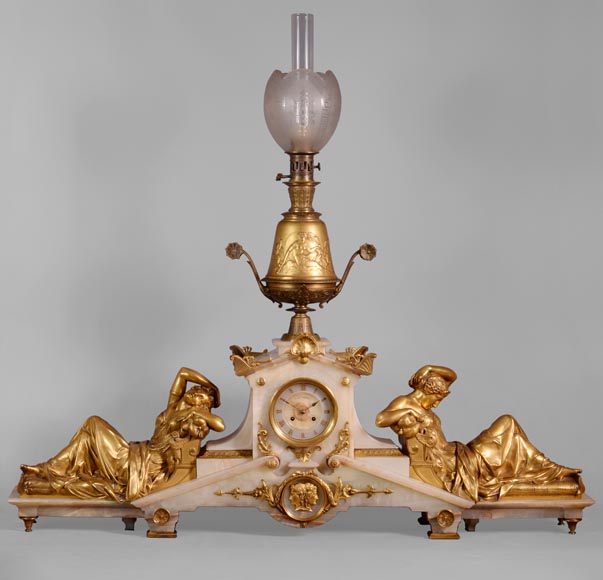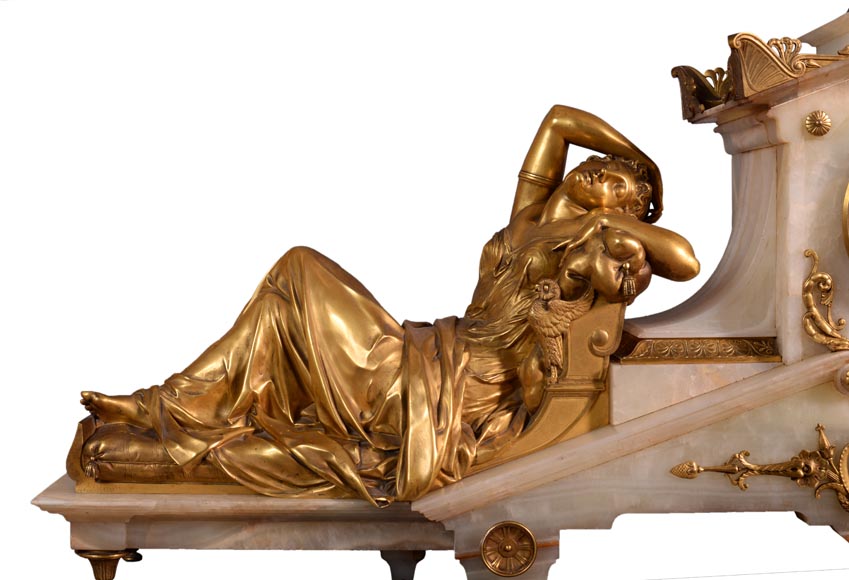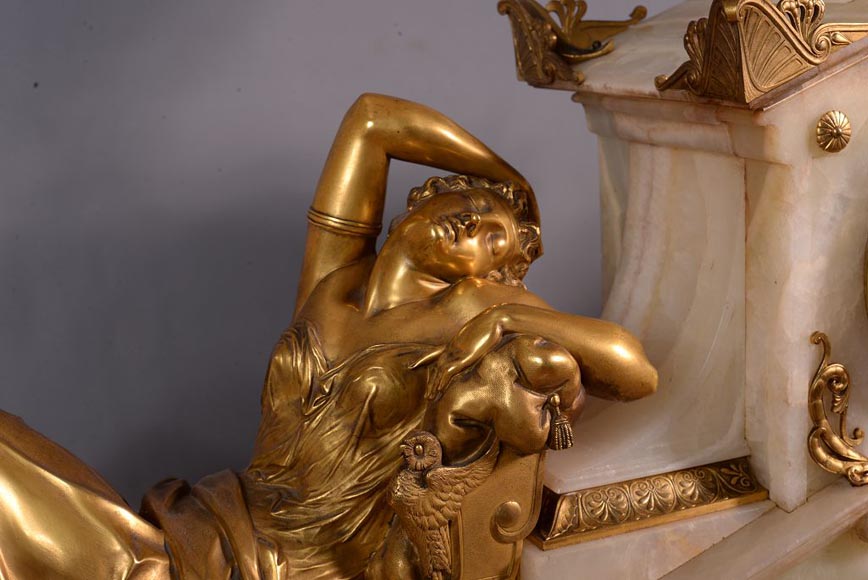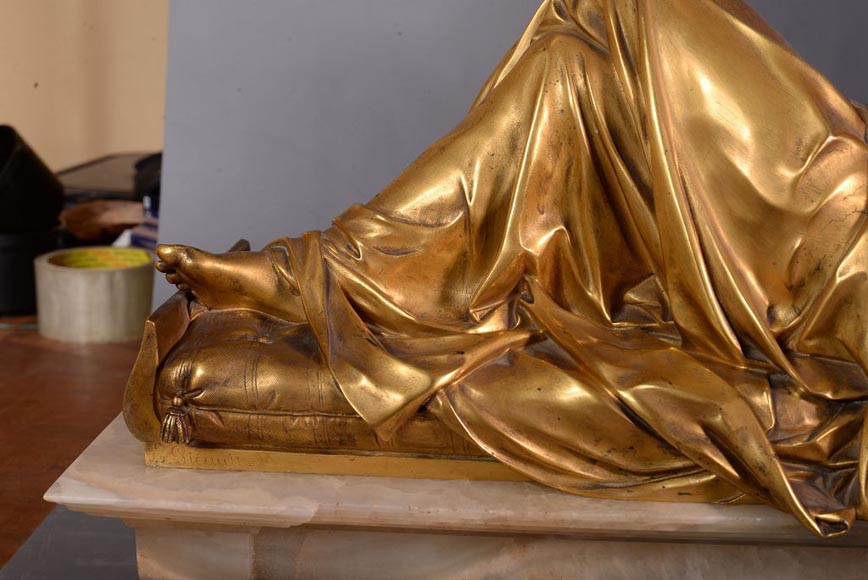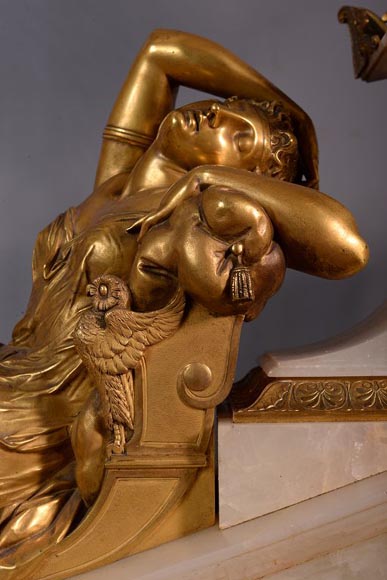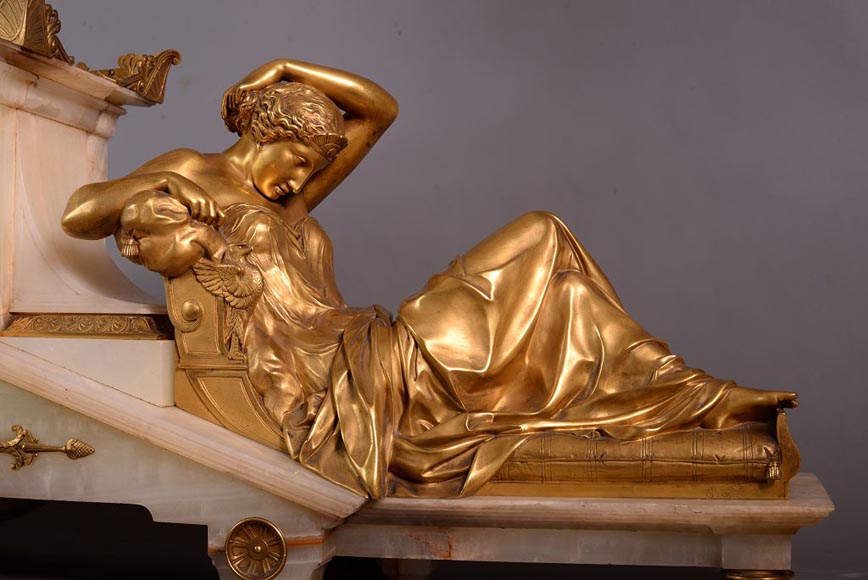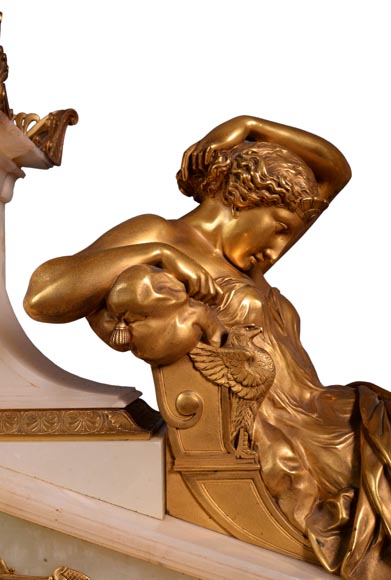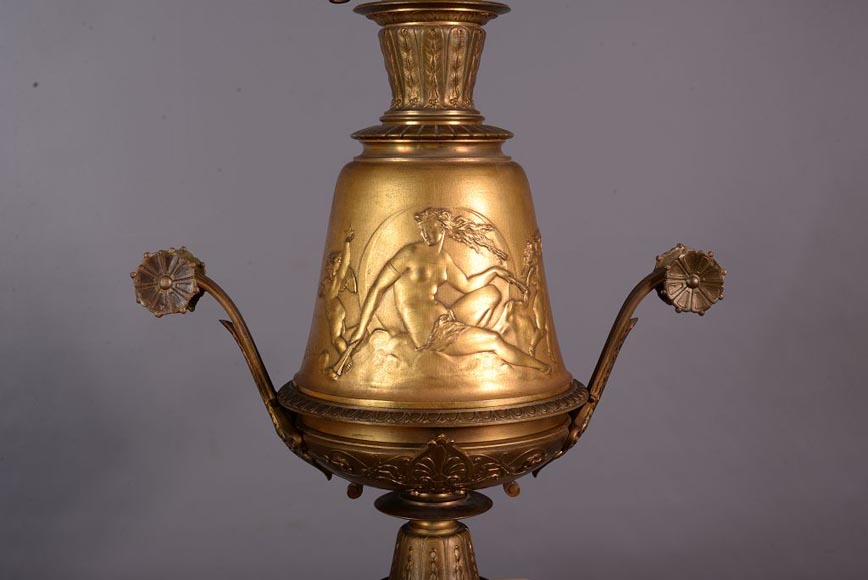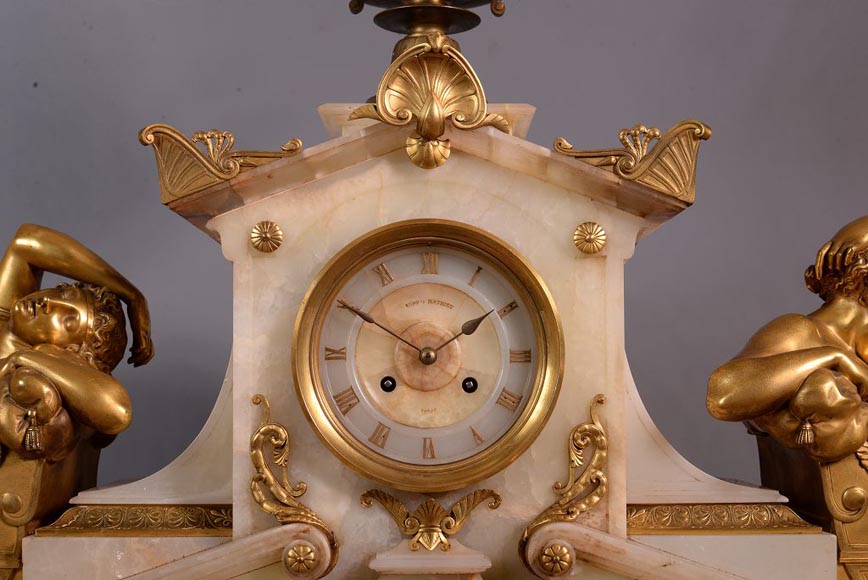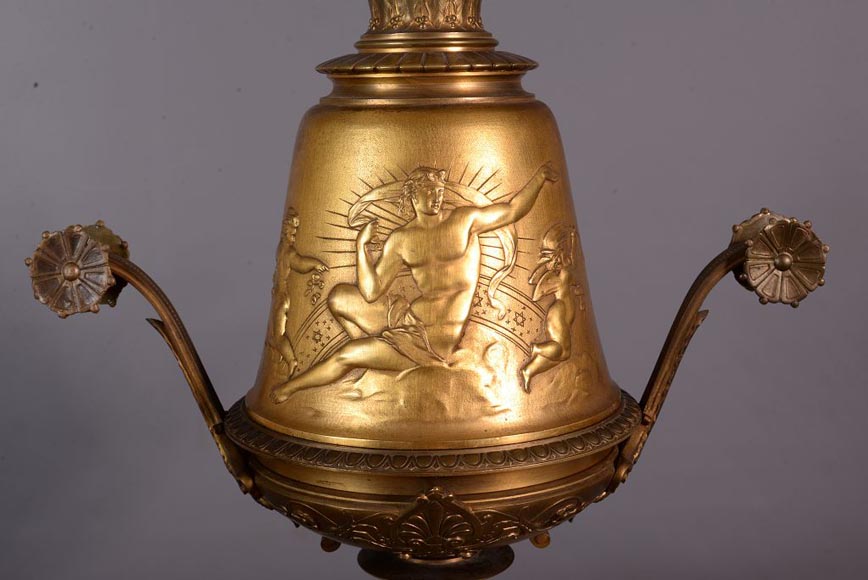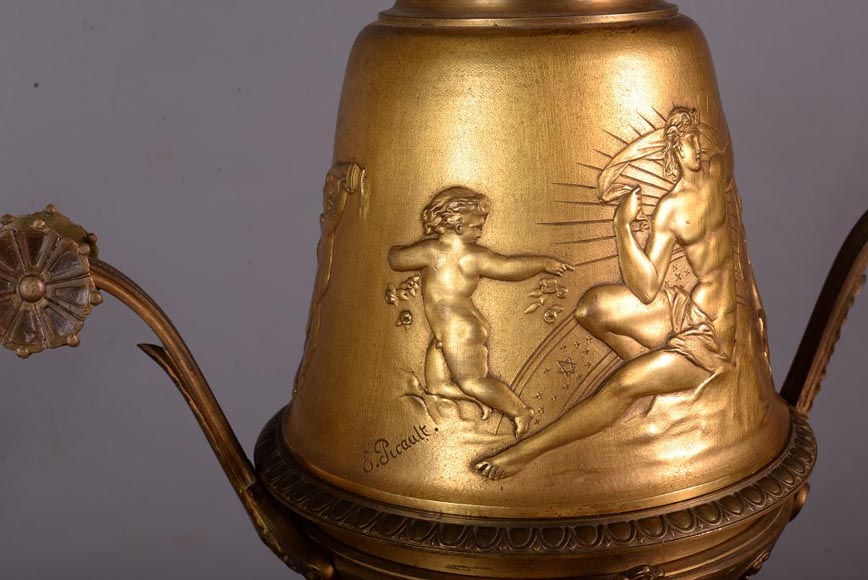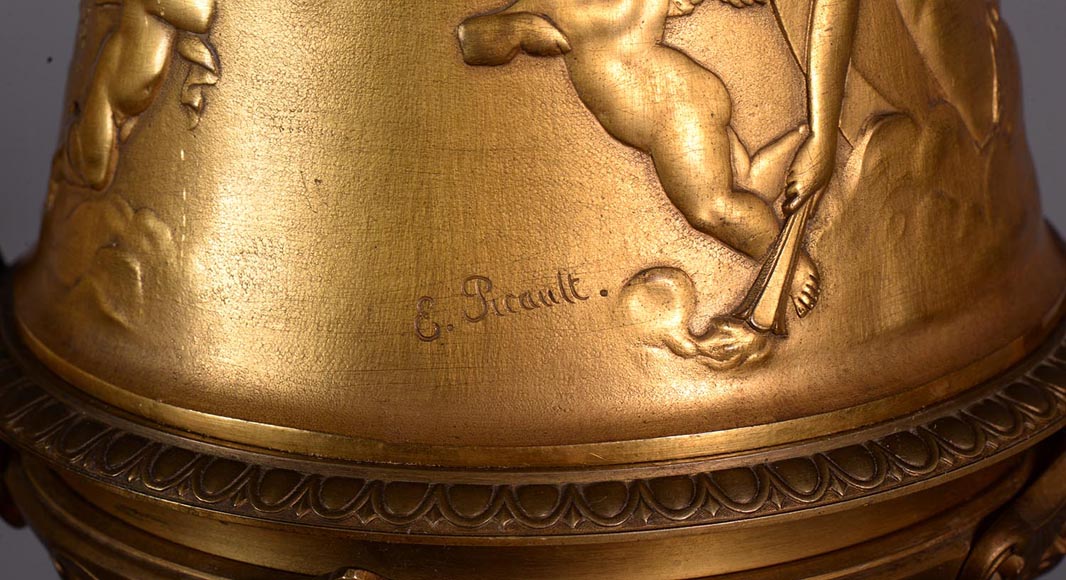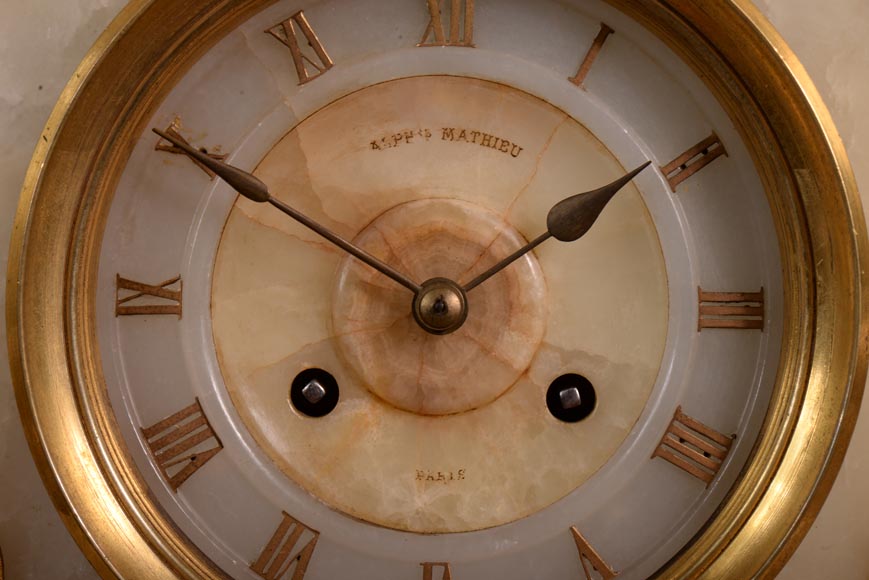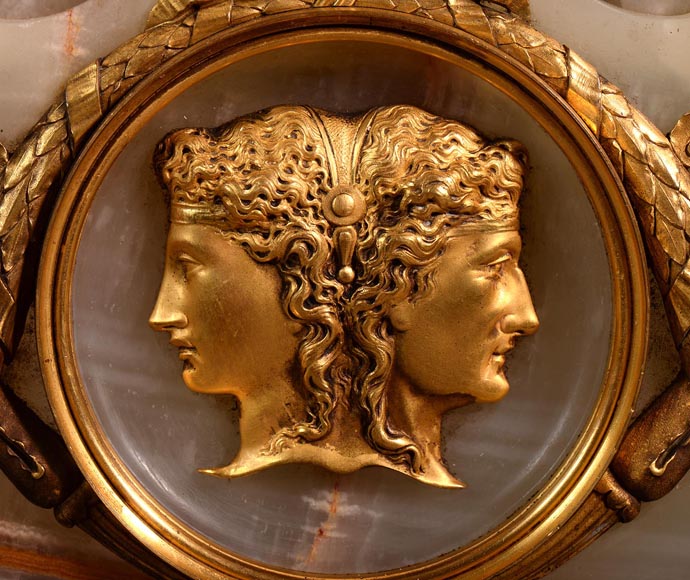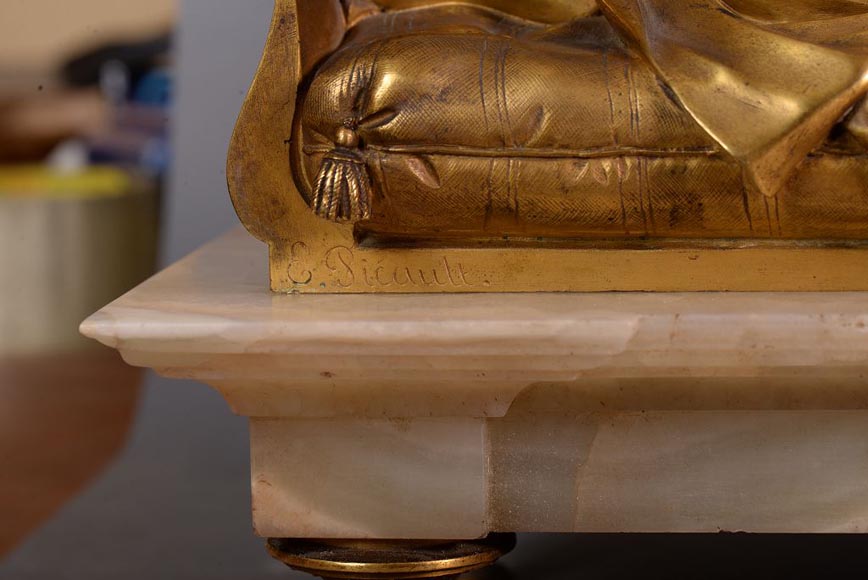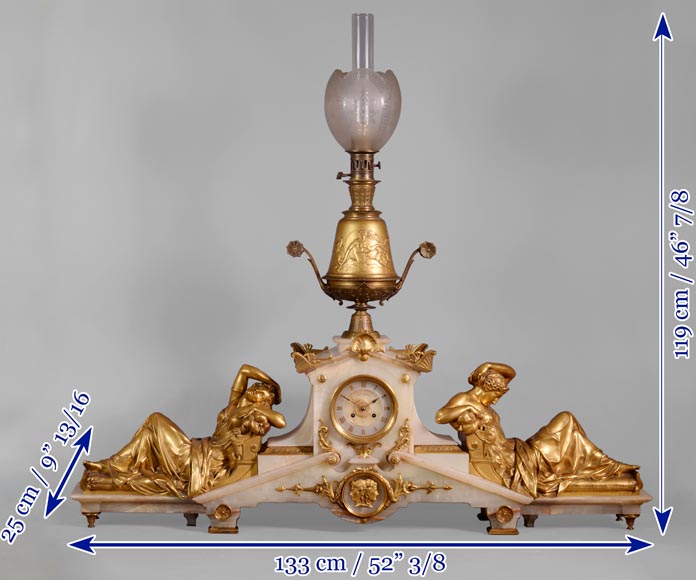Style Napoleon III / Ref.11231
Émile Louis PICAULT (sculptor), Alphonse Mathieu Paris (clock maker), "Dawn and Twilight", Monumental exhibition clock in the taste of the Païva hotel decor in Paris
Dimensions:
Width: 52'' ⅜ 133cm
Height: 46'' ⅞ 119cm
Depth: 9'' ⅞ 25cm
Origin:
19th century.
Status:
Good condition.
This spectacular onyx marble and gilded bronze clock is an extremely rare model, with a monumental dimension. The all sides decoration shows that it was designed to be placed in front of a mirror, the observer of this sumptuous antique clock being free to observe it entirely. Two gilded bronze women, languid figures lying on a Grecian couch, are placed back to back, on either side of a large central kerosene lamp. On the left side, eyes closed and head tilted, the woman accompanied by an owl symbolizes the allegory of Twilight. On the right, the head tilted forward but the eyes open, ready to wake up and accompanied by an eagle, she symbolizes Aurora. Also made out of gilded bronze, the central kerosene lamp shows a low-relief decoration pursuing the allegory of night and day : on the front, a woman and putti are inscribed in a crescent moon ; on the back, a male figure is haloed by sun rays.
The bronzes are signed four times "E. Picault" for Émile-Louis Picault, French sculptor born in Paris in 1833. While he exhibited for the first time at the Salon of French artists in 1863, he was called, in the early 1860s, on one of the most important sites of the Second Empire, the construction of the Hotel Païva, at 25 avenue of the Champs-Élysées in Paris.
The Countess of Païva, a famous parisian courtesan and semi-socialite, commissioned the architect Pierre Manguin in 1856 for the construction of her private mansion. The cost of construction, 10 million gold francs, as well as its duration, 10 years, hit the headlines and animated the social salons. For this prestigious mansion, Émile Picault made the gilt bronze medallions adorning the ground floor and upstairs bedrooms’ doors. He also produced the bronzes for the imposing Louis XIII dresser "very large, made in old walnut with marquetry of the same wood, marble inlays and Legrain sculptures, bronze medallion and statuettes, works by Picault and signed by him" ( in Municipal Commission of Old Paris, "Report of a visit made at the hotel Païva", session of Thursday May 30, 1901, p. 69.)
In this regard, it is quite interesting to notice, on our clock, two back-to-back women profiles presenting both features of youth and old age, allegories of time passing, with style and models very similar to the medallions made for the Hotel Païva.
Furthermore, the onyx marble used to realize this clock shows remarkable similarities with the onyx of the Countess of Païva's famous grand staircase or bathroom.
There are several types of marble called "Onyx" but the best known and most used is that one which comes from Algeria. Algerian Onyx has been mined in Ain-Snara, in the Oran region, since the 19th century. Exploited from Antiquity, the onyx quarries in Algeria were rediscovered in 1849. From this date, the onyx will be used in Europe for the production of works of art, clocks or sculptures. Due to the high price of onyx, it was rather used for small objects and more rarely for furniture, as it is at the Hotel Païva.
If it is not possible to affirm that this clock was made for this sumptuous hotel, the fact remains that its monumental dimensions, its decoration and the materials used seem to indicate a particular order worthy of this luxurious private mansion of the Avenue des Champs-Elysees. Certainly, a clock of this quality and size can only be an exceptional work of art intended for a sumptuous home or to be exhibited at a major international exhibition.
Sculptor Émile Louis Picault exhibited at the Salon of French Artists from 1863 to 1914, presenting medallions and sculpted groups. At the Salon of 1867, he exhibited The punishment of Tantalus, a bronze group. In 1880, he presented another bronze group called Perseus delivering Andromeda. He was rewarded an Honorable Mention in 1883 by exhibiting a statue of Valentinian I, Christian emperor. His sculpted work was very successful, notably thanks to the edition of bronze statuettes by the Susse foundry, the Colin and Houdebine foundries and the Société des Bronzes de Paris.
Informations
Price: on request
Recommended for you :
Dimensions:
Width: 32
Height: 46
Depth: 17
Dimensions:
Width: 47
Height: 76
Depth: 23
Dimensions:
Width: 47
Height: 84
Depth: 25
Dimensions:
Width: 35
Height: 34
Depth: 16
Dimensions:
Width: 38
Height: 49
Depth: 22
Dimensions:
Width: 51
Height: 42
Depth: 20
Dimensions:
Width: 38
Height: 79
Depth: 42
Dimensions:
Width: 34
Height: 67
Depth: 34
Dimensions:
Width: 25
Height: 46
Depth: 16
Dimensions:
Width: 41
Height: 38
Depth: 21
Dimensions:
Width: 47
Height: 48
Depth: 32
Dimensions:
Width: 32
Height: 52
Depth: 23



